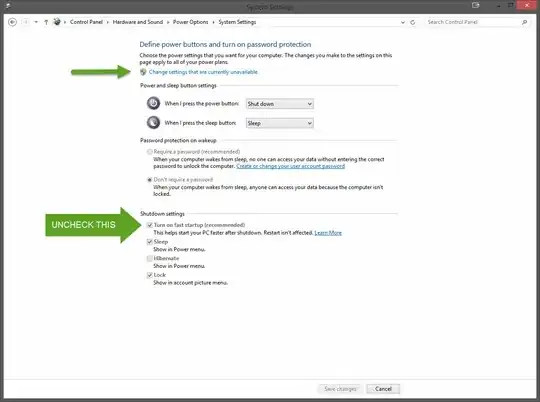Some time ago I upgraded to Windows 10 and wanted to give Ubuntu a try as well.
After the installation when I restarted my computer I have the options to choose from. When I choose Ubuntu everything is fine and after switching my computer off and on again I have this options again.
The problem occurs when I choose Windows boot manager. My windows 10 loads up I do my stuff etc.. When I switch it off and on again I do not have the options available to me and Windows 10 loads up automatically.
Also when I go to advanced system settings to set the default operating system to Ubuntu it is not on the drop down list, only Windows appears.
